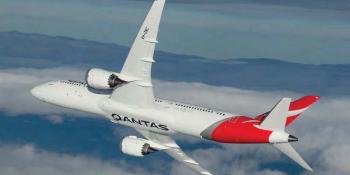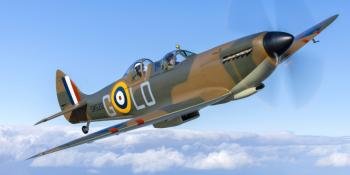Ian Frain provides an overview of the latest Bell 505 Jet Ranger X
COMMERCIAL BELL 505

The Paris Air Show celebrated its 50th year at Le Bourget in June 2013. A show where Bell Helicopter announced a new product initially dubbed the Short Light Single (SLS), a five-seat helicopter launched to compete in the light single market, continuing the legacy Bell 206B Jet Ranger product line.
Anaheim, California was the location of the 2014 Heli Expo staged by Helicopter Association International where Bell unveiled its SLS on February 25; a new cab subsequently designated the Bell 505.
Inside the Orange County Convention Centre, Bell placed a trio of mock-up Bell 505s on a stage, one finished in blue to promote its applicability to the airborne law enforcement mission, another finished in red for the corporate role, and a white one with open panels to display the Turbomeca Arrius 2R engine. The first prototype Bell 505 made its maiden flight in November that year.
French connection
In general, the Arrius family of helicopter engines are a proven lineage with over six million flight hours. Arrius engines have a power range between 450 and 750shp (335 to 560kW) and generally consist of two modules; a reduction gearbox and a gas generator.
Bell’s 505 Jet Ranger X is the first helicopter in the company’s history to be powered by a French built engine, in this case the Safran Turbomeca Arrius 2R with dual-channel fully-automated digital engine control or FADEC. Rated in the 500shp (372kW) range, the Arrius 2R provides 504shp (375kW) to take off and cruises at 457shp (340kW). Its FADEC is equipped with a backup auxiliary control unit, with improved safety and subsequent reduction in pilot workload, is fully-integrated into the helicopter’s avionics system, has start-up protection including surge and flame-out protection, and an engine data recorder.
Designed for ease of maintenance, the Arrius 2R features an automatic cycle and flight hour counting function, a BOOST compatible engine parameter recording system for maintenance tasks, and has a 3,000-hour time between overhaul rating.
First tested in April 2014 at Safran’s Bordes facility in France, the Arrius 2R engine was subsequently certified by the European Aviation Safety Agency in December 2015, followed by Federal Aviation Administration certification in 2016. Engines destined for Bell 505s will be produced at the Safran Helicopter Engines facility near Dallas, Texas.
Bell’s Helicopter Training Academy in Fort Worth trains both pilots and mechanics for its range of products. In 2017, the academy signed the first contract to support Arrius 2R engines under Safran’s 5Star Plans engine support package, one dedicated to customers operating up to five helicopters. 5Star Plans offers five different levels of services covering scheduled and unscheduled events, standard exchange, preferential engine pool access, warranty extension and by-the-hour support.
This specific contract is in place to provide support for two Bell 505s which will be operated by the academy for customer training.



Smart flight deck
Equipped with a Garmin 1000H light deck, the Bell 505 is the first in its class to have a fully-integrated glass light deck. Two 10.4- inch (264mm) displays are interchangeable as either the primary light display, or the multifunction display. According to Bell, the Garmin light deck system provides unparalleled crew situational awareness through the use of a fully-integrated glass light deck coupled with an advanced dualchannel FADEC engine control system, resulting in enhanced safety levels and mission capabilities. The cockpit design features wrap-around windscreens offering excellent crew visibility that results in increased situational awareness and safety.
The aircraft systems are fully-integrated with the Garmin 1000H avionics suite to display critical light instruments, audio alerts and CAS messages. A design goal for the Bell 505 team was to increase ease of operations and lower pilot workload, which have been realized through the combination of an advanced FADEC engine control system and a fullyintegrated avionics suite.
Other systems include the GEA71H engine and airframe unit (engine parameters and major system sensors signal processing), ADS-B (Automatic Dependant Surveillance- Broadcast) and Mode-S transponder.
Systems fitted to the 505 to help the pilot’s situational awareness include a traffic information system, a moving map, a helicopter terrain avoidance warning system and a synthetic vision system.
An additional option available to customers is an XM satellite data link to receive satellite weather utilising an Iridium voice/data transceiver, and the Garmin TS800 traffic advisory system. Two SD card slots enable the pilot to upload or download light plans and critical light data.
Garmin’s 1000HTM has an upgrade option comprising helicopter synthetic vision technology that provides a 3D depiction of the terrain ahead, along with other data such as air traffic and obstacles.
Mission profiles
Flying at 125kts (232km/h) with a useful load of 1,500lb (680kg), the Bell 505 is capable of performing different roles from corporate to airborne law enforcement and parapublic to utility. With a cabin volume of 99ft3 (2.8m3) the 505 offers generous leg and headroom with additional passenger comfort afforded by its wide, premium leather seats.
At Heli Expo 2018, Quebec-based Helite Aviation ordered a Bell 505 MAGnificent; a 505 configured with a custom VIP it undertaken by Mecaer Aviation Group at Bell’s Mirabel, Canada facility.
A Bell 505 can be easily configured for parapublic and airborne law enforcement roles with multi-spectral sensors, a Nightsun searchlight, and externally-mounted loudspeakers. The first Bell 505 sold for airborne law enforcement is destined for the Sacramento Police Department, which currently lies former US Army Bell OH-58C Kiowas. Sacramento’s helicopter is expected to be configured with an electro-optical sensor, a searchlight, externally-mounted loudspeakers and a high skid gear.
The Japan Coast Guard, an operator of the Bell 206B Jet Ranger and Bell 212, took delivery of four Bell 505s in April 2018.




Ontario-based DART Aerospace equipped the four helicopters with its aerospace emergency flotation system; another first for the 505. In preparation for the modifications to take place, Canada’s regulatory authority Transport Canada certified the flotation system, and subsequently the Japanese Civil Aviation Bureau (JCAB) awarded validation.
Shortly after Canada’s certification, the Federal Aviation Administration also certified the same flotation device.
Operating in a utility role, the Bell 505 has a 22ft2 (2m2) configurable flat cabin floor and an 18ft3 (0.51m3) baggage compartment. The type’s first utility operator, Northwest Helicopters Inc, recently received Federal Aviation Administration approval for a cargo hook rated up to 2,000lb (907kg).
Elsewhere, Illinois-based Helicopters Inc has ordered the first two Bell 505s configured for the electronic news gathering role, and perhaps a more unusual mission will be conducted by Asian Aviation Resources Pte Ltd in Cambodia to search for evidence and remains of missing or deceased personnel from the Vietnam War. A single Bell 505 will support the United States Department of Defense POW/MIA Accounting Agency in a multi-national effort.
Bell is also marketing the Bell 505 as a cost effective military training platform and presented a mock-up of a military training configured aircraft to the Republic of Korea Army Aviation.
Global presence
Deliveries of the Bell 505 commenced at the beginning of 2017 with delivery of the first production aircraft to Pylon Aviation based in Chandler, Arizona. Owner, Scott Urschel has been part of the Bell 505 programme from its inception and sits on the Bell Helicopters’ Customer Advisory Panel and provided advice to the company on the design of the Bell 505.
In May 2018, the Civil Administration of China certified the Bell 505 and the first three aircraft were subsequently delivered in country during June.
Also in June, Swiss company RUAG Aerospace received approval to reassemble Bell 505s. RUAG is a Bell Authorised Service Centre thus under EASA Part 145 MRO certification, the company can maintain the type. This summer, Sion based Heli-Alpes purchased and took delivery of the first Bell 505 in Switzerland.
In the UK, the first two Bell 505s were delivered in the spring to Bell UK representatives, Helix Aviation based at Manston, Kent. Subsequently the MD of Helix AV, Gary Slater, sits on the Bell Helicopter Customer Advisory Service Panel, and as such had input into the design of the Bell 505.
The 100th Bell 505 was delivered to Hunt Companies in June for use in the corporate transport role. Elsewhere, EASA and the FAA approved British Columbia-based Alpine Aerotech LP’s Bear Paw kit for the Bell 505. This kit is fitted to the landing gear (in this case the skids) to help spread the weight of the helicopter when landing in snow or on uneven terrain.
X is the future
Bell Helicopter changed its name and logo in February thus dropping helicopter from its name to reflect the company’s future in not just developing helicopters but other vertical light platforms such as air taxis and unmanned systems.
After the first Bell 206A made its maiden light in January 1966, the type made its first appearance just one month later at the annual Helicopter Association of America (formerly known as the California Helicopter Association and forerunner of HAI). Half a century later, deliveries of the Bell 505 to customers began.
Bell’s 505 Jet Ranger X is now operating in countries around the world with over 100 aircraft in service.





